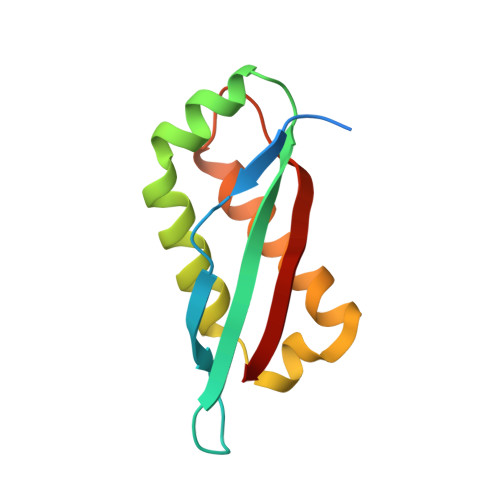The flagellar motor protein FliL forms a scaffold of circumferentially positioned rings required for stator activation.
Tachiyama, S., Chan, K.L., Liu, X., Hathroubi, S., Peterson, B., Khan, M.F., Ottemann, K.M., Liu, J., Roujeinikova, A.(2022) Proc Natl Acad Sci U S A 119
- PubMed: 35046042
- DOI: https://doi.org/10.1073/pnas.2118401119
- Primary Citation of Related Structures:
7SGN, 7SGO, 7SGP - PubMed Abstract:
The flagellar motor stator is an ion channel nanomachine that assembles as a ring of the MotA 5 MotB 2 units at the flagellar base. The role of accessory proteins required for stator assembly and activation remains largely enigmatic. Here, we show that one such assembly factor, the conserved protein FliL, forms an integral part of the Helicobacter pylori flagellar motor in a position that colocalizes with the stator. Cryogenic electron tomography reconstructions of the intact motor in whole wild-type cells and cells lacking FliL revealed that the periplasmic domain of FliL (FliL-C) forms 18 circumferentially positioned rings integrated with the 18 MotAB units. FliL-C formed partial rings in the crystal, and the crystal structure-based full ring model was consistent with the shape of the rings observed in situ. Our data suggest that each FliL ring is coaxially sandwiched between the MotA ring and the dimeric periplasmic MotB moiety of the stator unit and that the central hole of the FliL ring has density that is consistent with the plug/linker region of MotB in its extended, active conformation. Significant structural similarities were found between FliL-C and stomatin/prohibitin/flotillin/HflK/C domains of scaffolding proteins, suggesting that FliL acts as a scaffold. The binding energy released upon association of FliL with the stator units could be used to power the release of the plug helices. The finding that isolated FliL-C forms stable partial rings provides an insight into the putative mechanism by which the FliL rings assemble around the stator units.
Organizational Affiliation:
Department of Microbial Pathogenesis, Microbial Sciences Institute, Yale University School of Medicine, New Haven, CT 06536.














